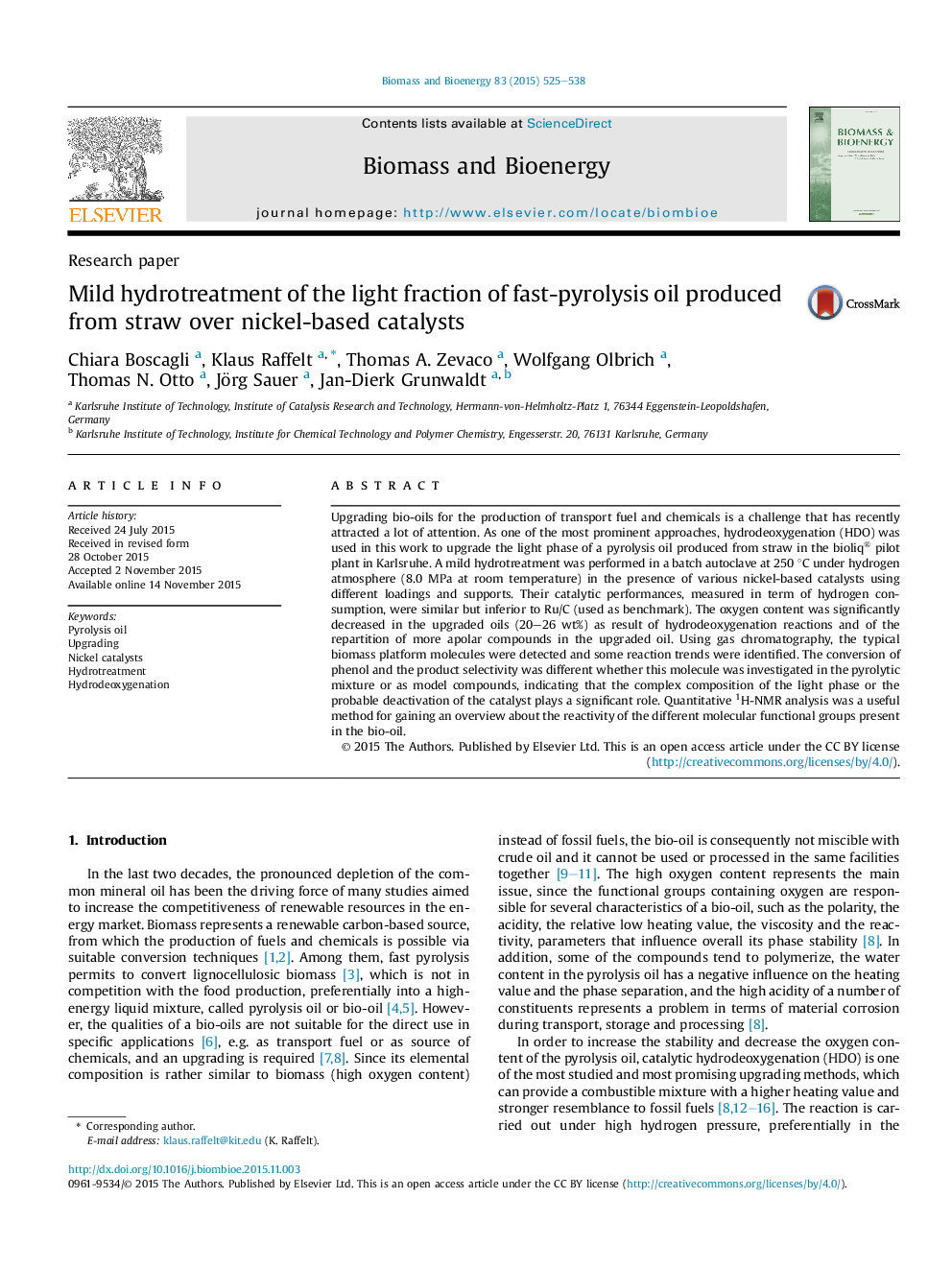| Article ID | Journal | Published Year | Pages | File Type |
|---|---|---|---|---|
| 7063747 | Biomass and Bioenergy | 2015 | 14 Pages |
Abstract
Upgrading bio-oils for the production of transport fuel and chemicals is a challenge that has recently attracted a lot of attention. As one of the most prominent approaches, hydrodeoxygenation (HDO) was used in this work to upgrade the light phase of a pyrolysis oil produced from straw in the bioliq® pilot plant in Karlsruhe. A mild hydrotreatment was performed in a batch autoclave at 250 °C under hydrogen atmosphere (8.0 MPa at room temperature) in the presence of various nickel-based catalysts using different loadings and supports. Their catalytic performances, measured in term of hydrogen consumption, were similar but inferior to Ru/C (used as benchmark). The oxygen content was significantly decreased in the upgraded oils (20-26 wt%) as result of hydrodeoxygenation reactions and of the repartition of more apolar compounds in the upgraded oil. Using gas chromatography, the typical biomass platform molecules were detected and some reaction trends were identified. The conversion of phenol and the product selectivity was different whether this molecule was investigated in the pyrolytic mixture or as model compounds, indicating that the complex composition of the light phase or the probable deactivation of the catalyst plays a significant role. Quantitative 1H-NMR analysis was a useful method for gaining an overview about the reactivity of the different molecular functional groups present in the bio-oil.
Related Topics
Physical Sciences and Engineering
Chemical Engineering
Process Chemistry and Technology
Authors
Chiara Boscagli, Klaus Raffelt, Thomas A. Zevaco, Wolfgang Olbrich, Thomas N. Otto, Jörg Sauer, Jan-Dierk Grunwaldt,
